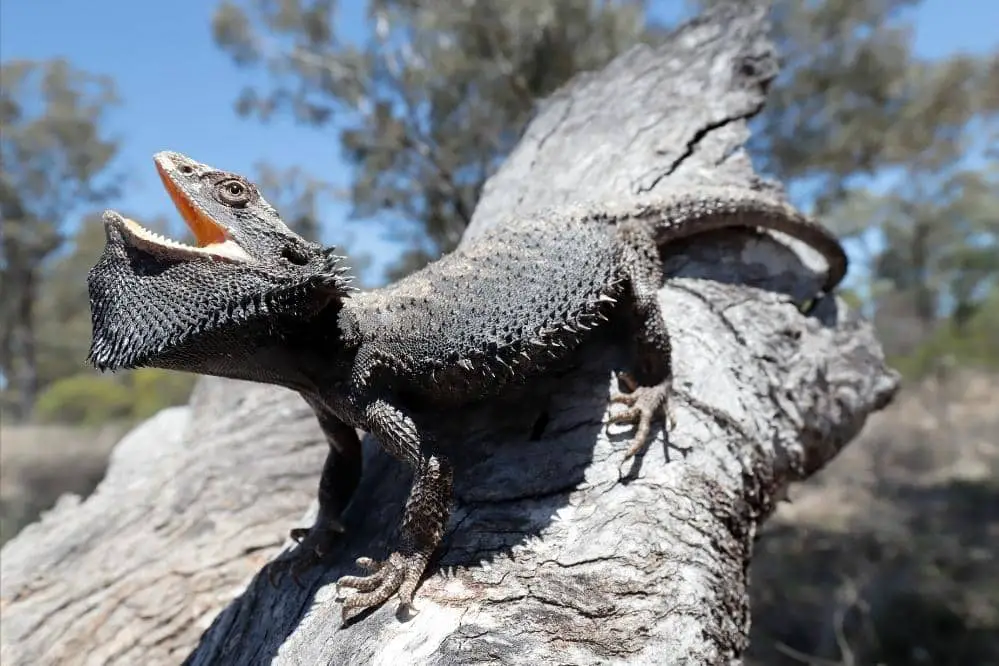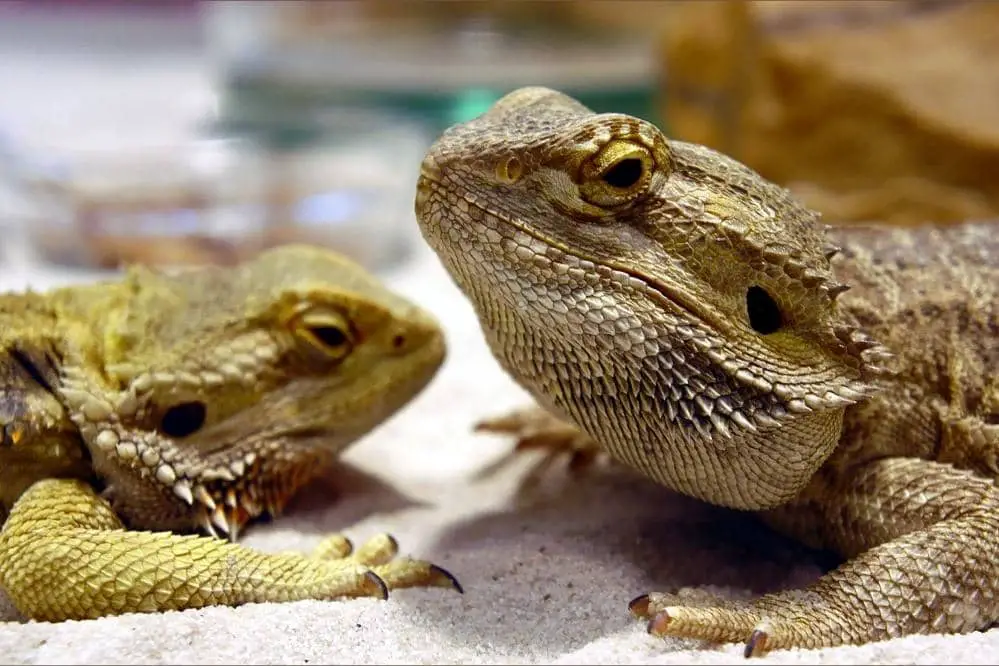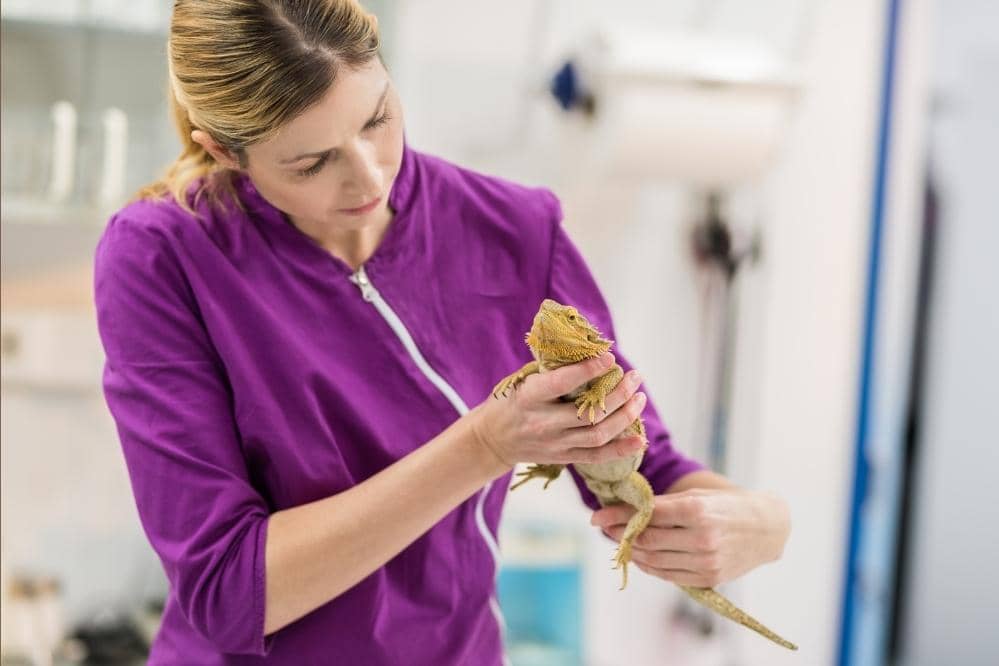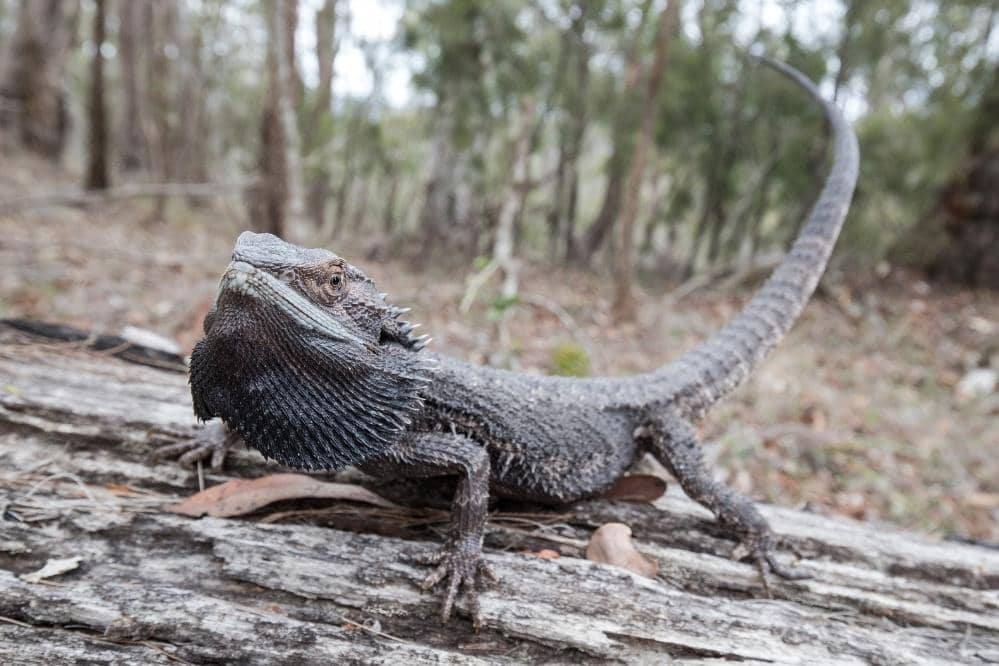Bearded dragons are exceptional and unique pets to have, not only because of their appearance but also due to their specific habitat requirements and the unique behavior and gestures they use to communicate with their owners. Change in body color is one of such remarkable features that you may not find in any other pet animal. Bearded dragons have the ability to change the color of specific body parts due to the presence of specific cells called “chromatophores.” However, this change in color usually happens over time, slowly as they grow.
Other than this, bearded dragons can turn black in response to different environmental stimuli or under some specific circumstances. The color change or turning black in response to external stimuli usually happens within seconds or minutes, depending on the intensity of the trigger. A bearded dragon can turn black due to many reasons; sometimes, it’s normal, and sometimes it needs immediate attention. Seeing your bearded dragon turning black can be alarming and terrifying for many beardie owners, especially novice ones.
Since turning black is actually a beardie’s way to tell you about his feelings or what is happening in his immediate environment, it’s crucial for every beardie owner to learn the reasons “why does bearded dragon beard turns black” and how to interpret them. So let’s have a look at different reasons for making the bearded dragon’s beard turn black.
Reasons “Why Does Bearded Dragon Beard Turns Black?”

1. Incorrect Temperature Inside Enclosure
If your bearded dragon is turning black, the first thing to check is the temperature gauge. Most of us are familiar with the fact that bearded dragons are cold blooded animals. The animals categorized as clod blooded can’t regulate their body temperature and depend on external heat sources to keep their bodies warm. So whenever the temperature inside the enclosures drops below the minimum required point, beardies turn black to absorb more heat. Generally, beardies turn black in the morning (when the temperature is usually on the lower side) and retain their original color after 2-3 hours of basking when their body temperatures become normal.
Related article How Many Hours Of Heat Do Bearded Dragons Need?
2. Its Breeding Time
If only the beard of your beardie is turning black, he may be looking for a love partner. The beards of male beardies are comparatively darker than female beardies. So when the breeding season arrives (between September and March), male beardies can turn their beards black to attract the females and to show off that I am an appropriate partner. In addition to black beard, they may show some other gestures like head bobbing and arm waving. However, this behavior is visible only when they have reached breeding age (around 1.5 years), and females are around.
3. Feeling Afraid Or Threatened
Since bearded dragons are solitary animals by nature, they get afraid or feel threatened very quickly, even if no actual threat is present. For example, newly adopted beardies can get frightened of their owners and turn their beards black when their owners approach them or try to handle them. In addition, they can get afraid of other larger pets in the house, or even a statue of a prey bird on the wall or a new accessory in their tank is enough to make them feel scared. So changing their body color and turning black (especially beard) is actually their way to appear scarier to the potential threat. And when they feel the threat is over, they return to their original color.
4. Post Brumation Affects
Though brumation (hibernation in the reptile world) is infrequent in captivity, some bearded dragons may still brumate if they get some stimuli required for brumation. Mostly when bearded dragons come out of their hides after brumating, they appear black, as it’s not easy for them to return to routine life and adjust to long light hours (day time) after a long deep sleep. However, beardies gradually adapt to routine life and regain their original color.
5. Feeling Territorial & Aggressive

Beardies are territorial by nature and don’t share their space with others, not even with another member of their own specie. If you are keeping two beardies in the same enclosure, you will frequently see them turning black and fighting. Beardies generally fight to establish dominance, and turning dark is their way of looking aggressive and threatening to the opponent. Even if you have only one bearded dragon, Sometimes, you may observe their beards turning black. It could be because they have noticed some other house lizard or pet approaching their tank, and they turn their beards black to show aggression and warn the visitor to stay away.
6. Stress & Anxiety
If everything else is fine, and you still feel that your bearded friend is turning dark or has turned black, it could be because he is feeling stressed or anxious for any reason. So you should carefully look for the stress factors and try to remove them as early as possible. Your beardie will turn to normal color as soon as the stress factor is removed. Some commonly found stress factors are:
- The presence of larger pets in the house, which also has access to the place where the beardie’s tank is placed.
- Too much noise made by kids, birds or due to other reasons.
- Improper or rough handling by the owner
- Handling immediately after feeding food (as bearded dragons prefer to bask after eating).
- Improper lighting
7. Change In Habitat
Generally, bearded dragons don’t like any change in their environment, and any sudden change in the habitat poses a type of stress. So you can expect your bearded dragon to become anxious and turn black if you have just adopted a new beardie or have entirely changed your beardie’s enclosure. However, once in the new home, beardies generally take some time to get familiar with the new habitat and will return to normal color gradually as they become accustomed to new settings.
8. Feeling Sick or Unwell

The darkening of the body can also be due to some disease or illness. Therefore it’s so crucial to observe each and everything closely in detail. Only then you will be able to sort out why your beardie is turning black and see the vet’s help if any signs of illness are present. Along with darkening of the skin, some common signs of illness are
- Lack of appetite
- Reduced mobility
- Impaction (if the belly is turning black)
- Ocular or nasal discharge
Summary
After reading the above line, now you know the common reason for bearded dragons turning black. In addition, you also have understood that in many cases, it’s normal, and they retain their normal body color in a short time. However, if the condition prolongs, you should look for unusual reasons (mentioned above) and sort them out accordingly; however, if the darkening of the body is due to some disease or illness, never delay to take advice from a vet.

